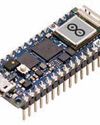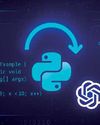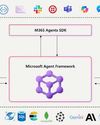Try GOLD - Free
India's Leap in Supercomputing: Innovating for Tomorrow
Open Source For You
|November 2024
As India strides towards self-sufficiency in supercomputing, embracing this evolution isn't just an option-it is pivotal for global competitiveness and technological leadership.

Supercomputing architecture is undergoing a transformative shift globally, driven by the need for unprecedented computational power. High performance compute (HPC) machines stand out for their ability to perform complex calculations at speeds far beyond conventional computers. Nations race to harness these capabilities for advancements in weather forecasting, drug discovery, artificial intelligence, and more. With significant strides in indigenous motherboard design and local manufacturing, coupled with ambitious initiatives like the National Supercomputer Mission, India’s journey in supercomputing is the one to watch.
High performance compute (HPC) vs general compute
By definition, an HPC machine must be able to do 10x more computations than the fastest laptop or desktop available at that time.
An HPC machine must process multiple operations in parallel to achieve high computational capacity. A general-purpose computer, like a laptop, has much lesser parallelism compared to an HPC machine. The silicon chip used in general-purpose machine is designed with very strict thermal constraints (that a person can withstand) and power dissipation constraints (with which the battery must last longer).
Whereas for an HPC, although the thermal and power constraints are targeted, the biggest objective is getting maximum performance. The performance capability is measured in terms of FLOPS (floating point operations per second).
A silicon designed for high performance compute must be able to perform multiple operations in parallel to achieve higher number of compute operations in a second. The hardware architecture and compiler play a critical role in achieving such parallel processing.
The applications for HPC are much different than a general-purpose compute. An HPC application will typically have workloads as a single operation/calculation on multiple datapoints.
This story is from the November 2024 edition of Open Source For You.
Subscribe to Magzter GOLD to access thousands of curated premium stories, and 10,000+ magazines and newspapers.
Already a subscriber? Sign In
MORE STORIES FROM Open Source For You

Open Source For You
The Role of Open Source in Building Modern Data Infrastructure
It's no secret that open source is emerging as the backbone of modern data infrastructure. Here’s a list of the core open source technologies used to deploy this infrastructure, along with some real-world examples and a brief on why open source matters.
3 mins
December 2025

Open Source For You
The Whispering Machines: How Open Source is Bringing Intelligence to the Tiniest Devices
Built on open source frameworks, TinyML is enabling complex machine learning models to run on the microcontrollers embedded in connected devices, bringing artificial intelligence to the very edge of the network.
3 mins
December 2025

Open Source For You
Setting Up Snort to Secure Your Network
Snort is a popular, open source intrusion detection system that monitors traffic in real time to detect malware. Here’s a detailed explanation of how to set it up on Ubuntu and test it by generating traffic from another system.
7 mins
December 2025

Open Source For You
When AI Meets DevOps to Build Self-Healing Systems
Traditional DevOps, with its rule-based automation, is struggling to work effectively in today’s complex tech world. But when combined with AlOps, it can lead to IT systems that predict failures and solve issues without human intervention.
7 mins
December 2025

Open Source For You
How to Automate Java Code Modernisation
This short guide illustrates that automating Java code modernisation with Python and OpenAI API is not just possible-it's remarkably effective.
5 mins
December 2025

Open Source For You
The Quest to Build a Quantum Computer
The road to large-scale quantum computing is long and hard, with incremental advances paving the way. But the destination is in sight.
12 mins
December 2025

Open Source For You
Job Opportunities: What's Hot in the Cloud Space?
If there's one field that refuses to slow down, it's cloud computing. Even as automation and AI reshape roles, cloud adoption continues to surge. From startups deploying microservices overnight to enterprises migrating decades of legacy systems, cloud remains the engine of digital transformation. For professionals, this means one thing: skills that live in the cloud won't come down anytime soon.
2 mins
December 2025

Open Source For You
Securing Client Identity with Post-Quantum Cryptography
Here's a quick tutorial on how to build a secure, real world client-server model that establishes client identity by using CRYSTALS-Dilithium, a post-quantum cryptography algorithm.
3 mins
December 2025

Open Source For You
Unlocking the Power of Multi-Agent Solutions with the Microsoft Agentic Framework
The Microsoft Agentic Framework is rapidly emerging as a cornerstone for developers, architects, and technology leaders seeking to build dynamic, intelligent systems powered by multiple collaborating agents. In an era where automation, distributed intelligence, and adaptive software are increasingly vital, this framework offers robust tools and features to accelerate the design and deployment of agent-based solutions.
6 mins
December 2025

Open Source For You
Apache Iceberg and Trino: Powering Data Lakehouse Architecture
Apache Iceberg is a cornerstone of any open data lakehouse, providing the transactional foundation upon which highly scalable and flexible analytics can flourish. Along with Trino, it can be used to build a robust, scalable, and high-performance data lakehouse.
4 mins
December 2025
Listen
Translate
Change font size
